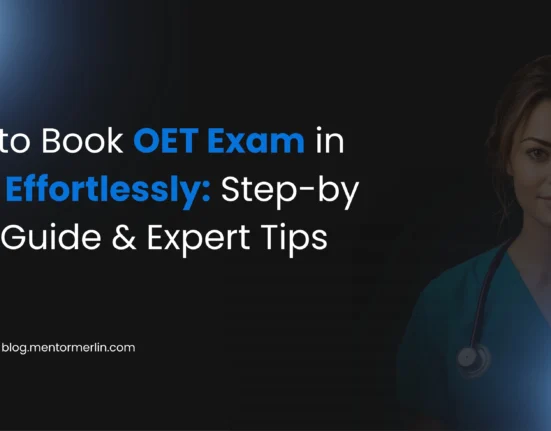Introduction
Passing the OET speaking subtest can be a daunting task for healthcare professionals aspiring to work or study in English-speaking environments. But fear not! This comprehensive guide, armed with proven tips and strategies, will equip you with the tools you need to ace this crucial test and unlock your career goals.

Unveiling the OET Speaking Subtest
Imagine conversing with a patient, client, or their concerned family member. That’s the essence of the OET speaking subtest, a 20-minute one-on-one interaction where your communication skills in a healthcare setting are put to the test.
Two role-plays specific to your profession await you in the OET Speaking Test. Simulating real-life scenarios like explaining procedures, offering advice, or reassuring a patient. An interlocutor plays the designated role, responding to your prompts and actions according to a script. You’ll have three minutes to prepare for each role play, allowing you to strategize and jot down notes on the provided cue card.
Remember, no external materials are allowed. Then, the conversation begins! Each role-play runs for about five to six minutes, providing ample opportunity to showcase your communication prowess.
Behind the Assessment Curtain
Two trained examiners meticulously dissect your performance through a recording, evaluating you on nine key aspects:
1. Overall Communicative Effectiveness: Did you achieve the goals of the role-play and convey information clearly and concisely?
2. Intelligibility: Can your pronunciation, intonation, and accent be easily understood by the interlocutor?
3. Fluency: Do you speak smoothly and naturally, avoiding hesitations and pauses that disrupt the flow of the conversation?
4. Appropriateness of Language: Do you use the right level of language, adapting formality to the setting, and avoiding jargon or overly technical terms?
5. Resources for Grammar and Expression: Do you demonstrate accurate grammar and vocabulary, showcasing diverse sentence structures and appropriate expressions?
6. Relationship-Building: Can you establish rapport with the interlocutor, demonstrating empathy, respect, and attentiveness?
7. Understanding and Incorporating the Patient’s Perspective: Do you actively listen to the interlocutor’s concerns and feelings, tailoring your responses accordingly?
8. Providing Structure: Do you organize your conversation logically, using transitions and summaries to guide the interlocutor’s understanding?
9. Information-Gathering: Do you effectively ask questions to gain necessary information and clarify any misunderstandings?

Each aspect receives a score, which is then averaged to calculate the final score for each role-play. The overall score for the subtest is derived by averaging the two role-play scores.
Unlocking the Vault: Pro Tips for Speaking Subtest Mastery
Now, let’s delve into the essential tools and strategies you need to master the OET speaking subtest:
1. Familiarity is key. Immerse yourself in the OET speaking test format and expectations. Explore sample materials and videos to gain valuable insights and dispel any anxieties.
2. Practice Makes Perfect: Hone your speaking skills with regular practice sessions. Engage with a partner or tutor who can provide constructive feedback and simulate role-play scenarios. Past test examples or mock-ups based on your chosen profession can be excellent practice tools.
Practice with Mentor Merlin ➟➟ Join our OET Course today!!
3. Communication over Knowledge: Remember, the OET Speaking test focuses on your communication skills, not your medical expertise. Utilize clear and simple language tailored to the interlocutor’s understanding, leaving complex jargon and medical intricacies behind.
4. Building bridges, not walls: Establish rapport with the interlocutor. Address them politely, demonstrate empathy and respect, utilize appropriate nonverbal cues (eye contact, nodding), and engage in small talk if the situation allows.
5. Actively listen and respond thoughtfully: Pay close attention to the interlocutor’s words, emotions, and perspective. Incorporate their concerns and needs into your responses. Utilize clarifying questions to avoid misunderstandings and verify their comprehension of your explanations.
6. Structure Your Story: Organize your conversation with clarity. Employ transitions like “firstly,” “secondly,” and “finally” to guide the flow. Offer concise summaries of key points and deliver clear instructions or recommendations.
7. Confidence is Your Ally: Approach the test with composure and self-assurance. Minor mistakes or misunderstandings happen. Don’t panic or apologize excessively. Politely correct yourself, seek clarification if needed, and move on confidently.
8. Master the Cue Card: Read the task points on the cue card thoroughly and address them meticulously. Follow the order and avoid irrelevant topics. Remember, the interlocutor’s responses are based on the cue card information, so staying focused is crucial.
By actively implementing these tips and strategies, you can confidently take on the OET speaking subtest and pave the way for a successful healthcare career in an English-speaking environment. Remember, preparation, practice, and a positive attitude are the foundation upon which you will build your confidence and mastery of English communication, ultimately guiding you to a fulfilling healthcare career in your desired English-speaking setting.
Dive deeper into the OET Reading Rabbit Hole—click here for expert tips!
Chat with us For any OET Related Queries
















Leave feedback about this